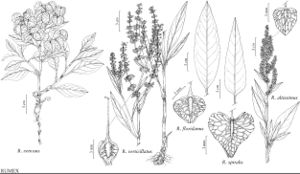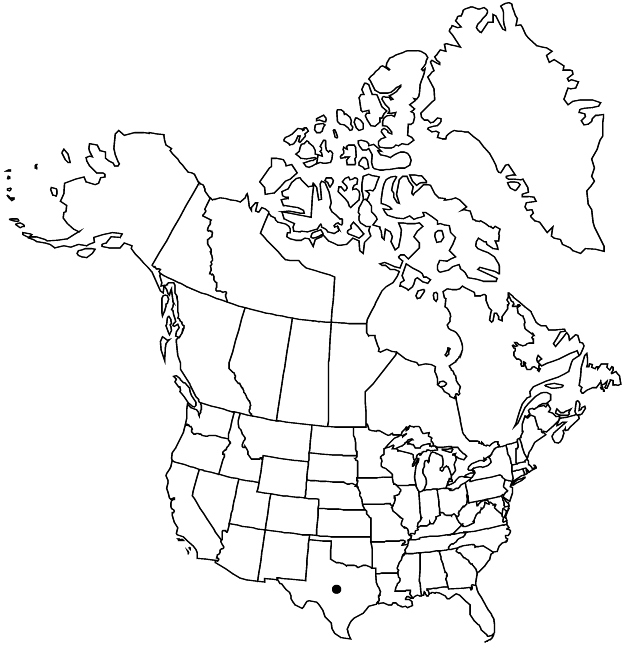Difference between revisions of "Rumex spiralis"
Bull. Torrey Bot. Club 22: 44, plate 228. 1895.
FNA>Volume Importer |
FNA>Volume Importer |
||
| Line 48: | Line 48: | ||
|publication year=1895 | |publication year=1895 | ||
|special status= | |special status= | ||
| − | |source xml=https://jpend@bitbucket.org/aafc-mbb/fna-data-curation.git/src/ | + | |source xml=https://jpend@bitbucket.org/aafc-mbb/fna-data-curation.git/src/f6b125a955440c0872999024f038d74684f65921/coarse_grained_fna_xml/V5/V5_1038.xml |
|subfamily=Polygonaceae subfam. Polygonoideae | |subfamily=Polygonaceae subfam. Polygonoideae | ||
|genus=Rumex | |genus=Rumex | ||
Revision as of 20:06, 24 September 2019
Plants perennial, glabrous, with creeping rhizomes. Stems ascending or erect, usually producing axillary shoots below 1st-order inflorescence or at proximal nodes, 50–90 cm. Leaf blades ovate-lanceolate, oblong-lanceolate, or lanceolate, 10–15 × 3–5.5 cm, usually 2.5–3.5 times as long as wide, widest in proximal 1/3, thick, usually not coriaceous, base broadly cuneate, truncate, or rounded, margins entire, flat or slightly undulate-crisped, apex acute or attenuate. Inflorescences terminal and axillary, terminal usually occupying distal 1/2 of stem, dense, narrowly to broadly paniculate (branches usually simple). Pedicels articulated in proximal 1/3, thin but slightly thickened distally, (2–)3–7(–8) mm, usually as long as or shorter than inner tepals, articulation slightly swollen. Flowers 12–20 in whorls; inner tepals broadly cordate or broadly ovate-deltoid, 7–10 × 8–12 mm, base deeply and broadly cordate, margins entire, apex acuminate; tubercles 3, equal or subequal, usually minutely to distinctly rugose. Achenes brown or dark reddish brown, 2.5–3.5 × 2–2.5 mm. 2n = 20.
Phenology: Flowering spring.
Habitat: Sandy and gravelly shores
Elevation: 0-200 m
Discussion
Rumex spiralis is related to R. altissimus; however, it is geographically restricted and morphologically distinct. It has inner tepals larger than those of any other member of subsect. Salicifolii and distinctly wider leaves.
Selected References
None.

